
Meta is being sued by 41 states over ‘addictive’ content allegedly harmful to children
Mark Zuckerberg's Meta is facing lawsuits from 41 states alleging there are addictive features aimed at hooking young users. The filings allege that Meta knowingly uses features on their platforms Instagram and Facebook to pull in and addict children. States are also claiming that Meta's algorithms were designed to coerce children into harmful content with features like "infinite scroll" and persistent notifications hoooking young users to continue using the app. Meta has been accused of violating federal privacy laws for children and consumer protection laws. The 233-page joint complaint obtained by Deadline, states: "Research has shown that young people's use of Meta's Social Media Platforms is associated with depression, anxiety, insomnia, interference with education and daily life, and many other negative outcomes. "Nonetheless, Meta has continued to deny and downplay these harmful effects to the pubic and to promote its Platforms as safe for young users." The complaint also said that the company's "motive is profit, and in seeking to maximise its financial gains, Meta has repeatedly misled the pubic about the substantial dangers of its Social Media Platforms." Weighing in on the lawsuit, a Meta spokesperson said: "We share the attorney general's commitment to providing teens with safe, positive experiences online, and have already introduced over 30 tools to support teens and their families. We're disappointed that instead of working productively with companies across the industry to create clear, age-appropriate standards for the many apps teens use, the attorneys general have chosen this path." In May, U.S. Surgeon General Vivek Murthy called social media a "profound risk" for youth and encouraged parents to restrict their children's access to it. Sign up to our free Indy100 weekly newsletter How to join the indy100's free WhatsApp channel Have your say in our news democracy. Click the upvote icon at the top of the page to help raise this article through the indy100 rankings.
2023-10-25 17:27
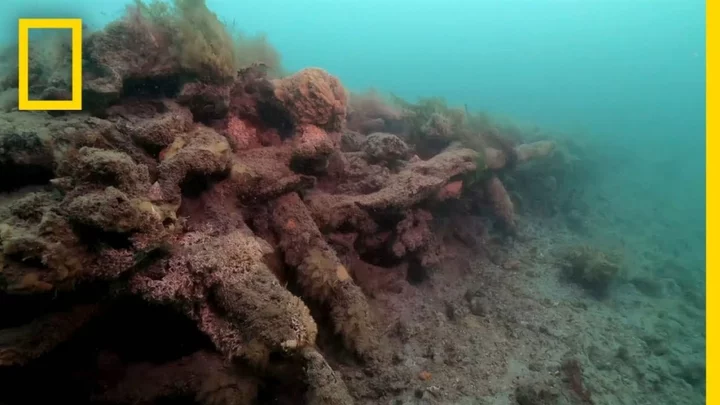
Inside the 8,000-year-old city at the bottom of the English channel
Ever wondered what’s hiding at the bottom of the English Channel? Deep sea divers do – partly because the cold waters and strong tides make it a notoriously difficult place to explore. One relic down there that few people have seen is the remains of an 8,000-year-old civilisation in an area called Doggerland – the landmass that once connected the British Isles to Europe. A National Geographic team led by scientist Albert Lin went down there in 2019 to find the so-called "lost city". The first thing they found were the remains of a tree, which had survived underwater for more than 8,000 years. As the divers went deeper, they came across a wooden structure that Lin thought could be a dock. “It feels like we are sitting in an ancient ghost town, but underwater,” he said. The existence of Doggerland was first confirmed in the late 19th century, but it wasn’t until about 100 years ago that ships started accidentally unearthing items of archaeological importance. In 1931, a trawler hauled up a lump of peat while fishing about 25 miles east of Norfolk. It contained an antler point, which was possibly used as a spear, dating from between 10,000BC and 4,000BC. Back on the surface, Lin described the wooden structure as “a whole platform down there. It's layered, one piece on top of the other, almost like a dock”. He added:” It’s cold down there and murky. But it's incredible. “You know, you descend down this line and out of the darkness comes the ancient past.” The wood survived because it was so deprived of oxygen, according to maritime archaeologist Garry Momber. “It's just preserved in a sort of anaerobic, oxygen-free environment. It would have stayed there for many more thousands of years. “But recently, the old landscape’s eroding away, which is how we found this.” The maritime archaeologist said finding composite structures like this was of 'international significance'. “It's 8,000 years old,” Momber added. “You don't just get these everyday.” Sign up for our free Indy100 weekly newsletter How to join the indy100's free WhatsApp channel Have your say in our news democracy. Click the upvote icon at the top of the page to help raise this article through the indy100 rankings
2023-10-25 15:19
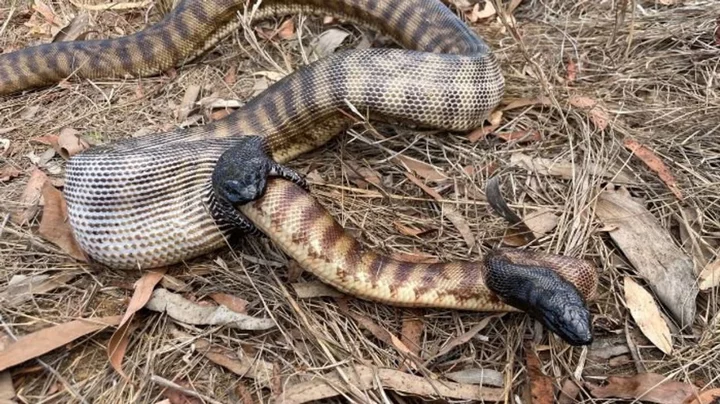
Rare moments captures python engaging in cannibalism
A species of snake has been seen engaging in cannibalistic behaviour after the incident was captured on camera. In Far North Queensland, Australia, a coastal region in the north of Queensland, a black-headed python was witnessed eating another member of the same species. The rare scene was witnessed at the Australian Wildlife Conservancy’s (AWC) Piccaninny Plains Wildlife Sanctuary where the manager, Nick Stock, was in for quite a shock. In fact, Stock had to get closer to the snakes to realise that what he was witnessing was a scene of cannibalism, as he saw a black-headed python that had constricted another smaller one and was eating it, tail first. In a statement about the incident, Stock explained: “Fortunately for me but not-so-fortunately for the python being consumed, it took around 15 minutes from when I first witnessed the initial constriction to the python finishing its meal and returning to its burrow which was only about 10 feet away.” Stock revealed he grabbed his camera and documented the rare event. While experts have witnessed pythons eating other species of snake, capturing a species eating one of its own kind on camera is unusual. “I have previously witnessed Black-headed Pythons eating an Eastern Brown Snake and a Yellow Spotted Monitor, however, this was the first time I witnessed a Black-headed Python eating another Black-headed Python,” Stock said. The behaviour is rarely caught on camera outside of captivity, but ecologist Helena Stokes says the phenomenon is not as uncommon as people might think. She explained: “Black-headed Pythons prefer to eat reptiles over mammals and are known to eat larger reptiles including goannas, and even venomous snakes, so I’m not surprised that they would consume another python if the opportunity arose.” Sign up to our free Indy100 weekly newsletter How to join the indy100's free WhatsApp channel Have your say in our news democracy. Click the upvote icon at the top of the page to help raise this article through the indy100 rankings.
2023-10-24 22:55

Convincing yourself food is highly calorific could suppress your appetite
A study suggests that convincing yourself that food has a higher calorie content may suppress your appetite and help you lose weight. Alia Crum and her colleagues at Yale University gave 46 healthy volunteers the same 380-calories milkshake. However, some participants were told it was a low-calorie choice, whilst others were told it was high in calories. The 'low-calorie' bottle of the shake claimed it to have zero percent fat, zero added sugar and be only 140 calories. Whilst the 'high-calorie' bottle was labelled as 'indulgent' and accounted to 620 calories. The team measured levels or ghrelin before and after volunteers drank the shake. Ghrelin is a hormone released by the stomach when we are hungry. "It also slows metabolism," Crum said, "just incase you might not find that food." Once you have a big meal after you ghrelin rises, your level proceed to drop again, telling your brain that you've had enough to eat and it's time to start metabolising, in order to burn the calories ingested. Meaning that when we have something like a small salad, ghrelin levels don't drop as much, and metabolism isn't triggered in the same way. For a while, scientists believed that ghrelin levels change in response to the nutrients in your stomach. But Crum's study pushed back on that belief. If participants believed they were drinking the high-calorie shake, the body responded as though the participants had consumed more than they actually had. "The ghrelin levels dropped about three times more when people were consuming the indulgent shake (or though they were consuming the indulgent shake)," Crum said. However, it doesn't mean the nutrients doesn't matter, but Crum suggests that the metabolic model may need to be rethought. "Our beliefs matter in virtually every domain, in everything we do," Crum says. "How much is a mystery, but I don't we've given enough credit to the role of our beliefs in determining our physiology, our reality." Sign up to our free Indy100 weekly newsletter Have your say in our news democracy. Click the upvote icon at the top of the page to help raise this article through the indy100 rankings. How to join the indy100's free WhatsApp channel
2023-10-24 21:21
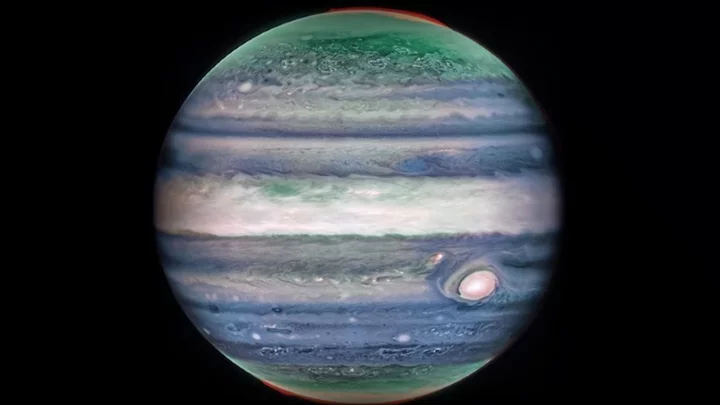
Surprise discovery shows major feature on Jupiter that experts had previously missed
Despite being by far the largest planet in the solar system, experts are still making surprise discoveries about Jupiter. The planet is only beaten in size by the Sun and as technology has evolved, scientists have sent multiple probes to investigate Jupiter. Despite all the scientific work that has gone into investigating the stripes and swirls that give Jupiters its well-known appearance, experts have only just discovered the existence of a high-speed jetstream above the clouds around the planet’s equator. The jetstream is a whopping 3,000 miles wide and was discovered thanks to the infrared data gathered by the James Webb Space Telescope (JWST) currently orbiting the Sun. Its discovery is giving experts an insight into how the planet’s atmosphere works, as well as its ill-understood weather phenomena. Ricardo Hueso from the University of the Basque Country in Spain is the lead author of the study, published in Nature Astronomy and explained: “This is something that totally surprised us.” He added: “What we have always seen as blurred hazes in Jupiter’s atmosphere now appear as crisp features that we can track along with the planet’s fast rotation.” Scientists have long been aware of light and dark clouds that are known as zones and belts that travel around the planet in different directions and at differing altitudes, but how this occurs has left them baffled. Analysis of the data collected by the JWST revealed the jetstream that was previously only just visible but very hazy. Data confirmed that it sits around 25 miles above the clouds and travels around Jupiter’s equator at around 515 kilometres per hour (320 mph). The researchers compared their data with that collected from the Hubble’s observations of the lower cloud levels and concluded that the jetstream may form part of a weather pattern. Planetary scientist Leigh Fletcher from the University of Leicester, explained: “Jupiter has a complicated but repeatable pattern of winds and temperatures in its equatorial stratosphere, high above the winds in the clouds and hazes measured at these wavelengths.” He added: “If the strength of this new jet is connected to this oscillating stratospheric pattern, we might expect the jet to vary considerably over the next two to four years – it'll be really exciting to test this theory in the years to come.” Sign up to our free Indy100 weekly newsletter How to join the indy100's free WhatsApp channel Have your say in our news democracy. Click the upvote icon at the top of the page to help raise this article through the indy100 rankings.
2023-10-24 19:16

Scientists warn bananas could go extinct as disease ravages fruit
Bad news for banana lovers – scientists have warned that the fruit could face extinction, after a fungal disease outbreak. Crops of the Cavendish banana have been hit by an infection called Panama disease, with those in Asia, Africa, the Middle East, Australia and central America particularly badly affected. The disease, which is also known as banana wilt, starts in the roots of the banana tree and then spreads through its vascular system. Ultimately, it stops the plant from absorbing water or carrying out photosynthesis, eventually killing the tree. For Cavendish banana growers, it could spell disaster. While there are more than 1,000 varieties of bananas, about 47 per cent that humans eat are Cavendish. Cavendish has historically dominated the global banana market since the 1950s, partly because of its resistance to the main banana-killing diseases. It also has a long shelf life, making it more attractive for international import and export, and the plant also produces more bananas than other varieties on the same amount of land. Part of the reason scientists think it could be endangered is because of what happened to another popular banana variety called the Gros Michel. Gros Michel was the main export banana in the early 20th century, but was practically wiped out by a predecessor disease to the one hitting Cavendishes now. The first infections of Gros Michel farms began in the late 19th century and took several decades to affect production to the point where growers were looking for a new variety to sell. Cavendish, meanwhile, was first hit by the current strain of Panama disease in 1997, and it has now spread across several continents. However, scientists are working on a genetically modified version of the banana to fight to infection. James Dale, a professor and leader of the banana biotechnology program at Queensland University of Technology, is working on the project. He told Insider: “The disease moves slowly, so we have at least a decade before the impact is drastic.” “I would say with certainty that there will be a solution before the export market for Cavendish is severely affected.” Let’s hope he’s right. How to join the indy100's free WhatsApp channel Sign up to our free Indy100 weekly newsletter Have your say in our news democracy. Click the upvote icon at the top of the page to help raise this article through the indy100 rankings.
2023-10-24 18:21
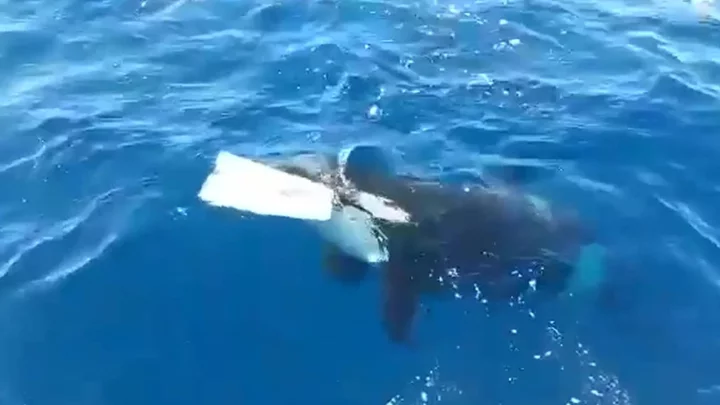
Scientists think orcas might be getting smarter as they show frightening new behaviours
As if orcas weren’t frightening enough, experts think they are getting even smarter as they have started to learn some terrifying new behaviours. The whale species, commonly known as killer whales, is an apex predator that has learned to adapt its hunting methods to a variety of different prey. In March 2019, researchers were stunned when they witnessed the first documented case of a pod of orcas working as a team to kill one of the largest animals on the planet, a blue whale. The gruesome incident took place on the coast of southwestern Australia as experts watched as a dozen orcas bit chunks out of the adult blue whale, slowly wearing it down until it finally died an hour later. While it may have been the first recorded case, it has not been the last. Additionally, a small population of orcas on the coast of Spain and Portugal have become fans of ramming and damaging boats, sometimes causing enough destruction to sink them. Elsewhere, orcas have been seen abducting baby pilot whales and tearing the livers out of sharks that later wash up on shore. Deborah Giles, an orca researcher at the University of Washington and the nonprofit Wild Orca explained to Live Science: “These are animals with an incredibly complex and highly evolved brain. They've got parts of their brain that are associated with memory and emotion that are significantly more developed than even in the human brain.” But, while the actual anatomy of the animals’ brains hasn’t changed, their ability to learn is what is making orcas smarter than ever before. They implement what is known as social learning, where younger members of the pods observe and learn hunting methods from the adults, particularly the dominant matriarch, who themselves, are always learning. Josh McInnes, a marine ecologist at the University of British Columbia, explained: “This behaviour may be being shared between individuals, and that's maybe why we're seeing an increase in some of these mortality events.” But, while experts think they are getting smarter, they also think it may be leading to the breakup of large pods of orcas. Michael Weiss, a behavioural ecologist and research director at the Center for Whale Research in Washington state, said: “Their social bonds get weaker because you can't be in a big partying killer whale group if you're all hungry and trying to search for food.” Sign up to our free Indy100 weekly newsletter How to join the indy100's free WhatsApp channel Have your say in our news democracy. Click the upvote icon at the top of the page to help raise this article through the indy100 rankings.
2023-10-24 17:54
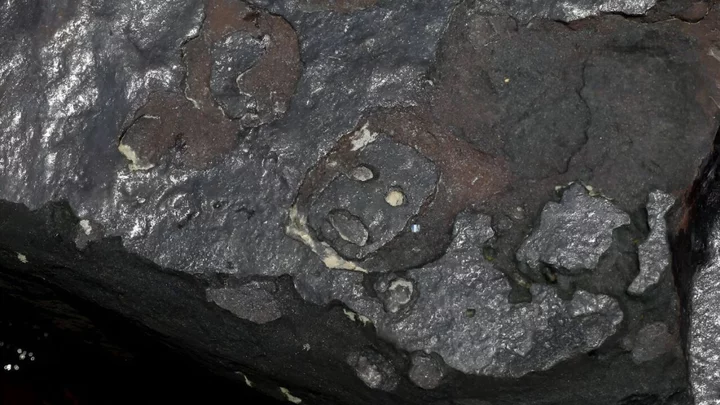
Mysterious ancient engravings uncovered by drought in the Amazon
The discovery of beautiful, ancient rock engravings has been a bitter-sweet experience for experts in Brazil’s Amazon. On the one hand, the carvings offer an exciting insight into the first people who inhabited the region. On the other, it is a worrying signal that the Negro River, which runs through the region, may soon cease to exist. An extreme drought in parts of the rainforest has led to a dramatic drop in river water levels – with the Negro’s flow reaching its lowest level for 121 years last week. The drop exposed dozens of normally submerged rock formations featuring carvings of human forms that may date back some 2,000 years. Livia Ribeiro, a longtime resident of the Amazon's largest city, Manaus, said she heard about the rock engravings from friends and wanted to check them out. "I thought it was a lie,” she told the AFP news agency. “I had never seen this and I've lived in Manaus for 27 years.” She admitted that whilst scientists and members of the public were delighted at the discovery, they acknowledged that it also raised unsettling questions. "We come, we look at (the engravings) and we think they are beautiful. But at the same time, it is worrying,” she said. “I also think about whether this river will exist in 50 or 100 years.” Drought in Brazil's Amazon has drastically reduced river levels in recent weeks, affecting a region that depends on a labrynth of waterways for transportation and supplies. The Brazilian government has sent emergency aid to the area, where normally bustling riverbanks are dry and littered with stranded boats. According to experts, the dry season has worsened this year due to El Niño, an irregular climate pattern over the Pacific Ocean that disrupts normal weather, adding to the effect of climate change. Jaime Oliveira, of the Brazilian Institute of Historical Heritage (Iphan), said the engravings comprise an archaeological site of "great relevance”. They are located at a site known as Praia das Lajes and were first seen in 2010, during another period of drought (which was not as severe as the current one). Most of the engravings are of human faces, some of them rectangular and others oval, with smiles or grim expressions. "The site expresses emotions, feelings, it is an engraved rock record, but it has something in common with current works of art," Oliveira said. For Beatriz Carneiro, historian and member of Iphan, Praia das Lajes has an "inestimable" value in understanding the first people who inhabited the region, a field still little explored. "Unhappily it is now reappearing with the worsening of the drought," she said. "Having our rivers back (flooded) and keeping the engravings submerged will help preserve them, even more than our work." Sign up for our free Indy100 weekly newsletter Have your say in our news democracy. Click the upvote icon at the top of the page to help raise this article through the indy100 rankings
2023-10-23 22:23

Scientists baffled after discovering that the Earth's core is 'leaking'
The name “core” suggests something hard and fixed but, it turns out, the Earth’s core is leaking. That is, at least, according to a team of top scientists, who drew the conclusion after analysing 62-million-old Arctic rocks. Geochemists from the California Institute of Technology and Woods Hole Oceanographic Institution detected record concentrations of helium 3 (3He) and helium 4 (4He) isotopes in the rocks, which suggest a slow trickle up from the very heart of our planet. They believe there could be reserves of the elusive gas buried some 2,900km underground. Helium is a surprisingly rare element on the Earth’s surface and experts have yet to establish just how much of it remains trapped deep beneath our feet. However, the new discovery has provided them with a fresh insight into the most mysterious region of our world. Understanding the presence of these helium isotopes could illuminate key processes in the core, such as how the Earth generated its life-protecting magnetic field. Most helium in the universe dates back to the Big Bang which occurred 13.8 billion years ago. The Earth swallowed up some of this as an infant planet, but mostly burped it all away during its 4.6 billion-year-long formation, as Science Alert reports. This means that any traces of helium found in volcanic rock – such as the samples unearthed in the Arctic – are believed to come either from pockets of mantle that are yet to release their helium, or from a vast, slow-leaking reserve. Basaltic lavas on Canada's Baffin Island contain some of the world's highest ratios of 3He to 4He, which geologists believe indicates that the gas's presence is not to do with the atmosphere, but rather the sign of deeper terrestrial origins. Several years ago, geochemist Forrest Horton uncovered helium isotope ratios of up to 50 times that of atmospheric levels in samples collected from Baffin's lava fields. This unusual concentration was also detected in lavas collected from Iceland. Horton and his team wondered if the helium in both samples may have derived from an ancient reservoir deep within the crust. And, it seems, their hunch may have been right. Their latest analysis – including specimens of the mineral olivine taken from dozens of sites across Baffin and surrounding islands – has delivered the highest ratio of 3He to 4He ever recorded in volcanic rock – measuring nearly 70 times anything previously detected in the atmosphere, as Science Alert notes. The team also considered ratios of other isotopes in order to rule out factors that may have altered the helium’s composition post-volcanic eruption, and found that the ratio of isotopes in the gas neon also matched the conditions present during the Earth’s formation. Despite advances in geology, the Earth’s core remains a great mystery, given that we have no way of directly exploring its core. The deepest hole humans have ever dug – branded the "entrance to hell" – extended an impressive 12,263m (40,230ft) down, but even that doesn’t come close to breaking through the crust to the layers beneath. Still, thanks to techniques like seismic tomography – which analyses how waves of energy travel through different materials during earthquakes – we’ve been able to map out the world’s interior. And carefully crafted simulations, based on the thermodynamics and pressures of our planet’s innards, suggest reserves of noble gases (like helium and neon) trapped in the core could have been protected as the Earth grew before seeping into the surrounding mantle over time. If the core is leaking, this could teach us a thing or two about how planets like ours form and how life, eventually, emerges. Sign up for our free Indy100 weekly newsletter Have your say in our news democracy. Click the upvote icon at the top of the page to help raise this article through the indy100 rankings
2023-10-23 17:21

Astronomers have just discovered an 8 billion-year-old radio signal
An eight billion-year-old radio signal containing extreme levels of energy has been discovered by astronomers. According to the journal Science, a “fast radio burst” was recorded as lasting for just a millisecond. The radio-frequency electromagnetic radiation was identified as FRB 20220610A, and it contained a truly staggering level of energy – releasing the same amount that the sun releases in 30 years. As CNN reports, the true nature of these blasts can often be hard to determine, given that they last for such a short length of time. It is believed, however, that they result from galaxies merging to create new stars. Furthermore, they could also be 'weighed', in order to measure the mass of the elements in the universe which are found between galaxies and unaccounted for. Coauthor Ryan Shannon said: “If we count up the amount of normal matter in the universe - the atoms that we are all made of - we find that more than half of what should be there today is missing. “We think that the missing matter is hiding in the space between galaxies, but it may just be so hot and diffuse that it’s impossible to see using normal techniques.” The huge signal was discovered using the Australian SKA Pathfinder radio telescope, before further observation was undertaken using a telescope in China – which was able to determine that the fast radio burst was the oldest and more remote example discovered to date. It comes after scientists were left baffled following the discovery of a mysterious object which sends radio waves every 21 minutes earlier this year. The really strange thing is, it’s been doing the same thing for 45 years and astronomers are still unsure about what it could be. Sign up for our free Indy100 weekly newsletter Have your say in our news democracy. Click the upvote icon at the top of the page to help raise this article through the indy100 rankings
2023-10-22 23:21

Former Twitter employee says working for Elon Musk was ‘hardest experience of her life’
A former employee of Twitter/X has spoken about the working conditions under Elon Musk, claiming that it was the ‘hardest experience of her life’. The social media platform’s head of trust and safety, Ella Irwin, resigned from the company in June, confirming the decision to Reuters. Her decision to leave the company came after Musk doubled down on his stance on trans issues, confirming he would be lobbying legislators to “criminalise making severe, irreversible changes to children below the age of consent” through gender-affirming surgery, and that “nobody knows who they are as a child”. Writing in June, Irwin said that it had become clear “there was no longer alignment” between her “nonnegotiable principles” and the policies of Twitter/X. Now, Irwin has spoken further about her decision and criticised the “terrible” decisions made by Musk. Irwin released a statement to NBC News, saying: “It absolutely was the hardest experience that I've gone through in my career. Speaking about Musk’s decision making, Irwin said: “There's more emotion behind his decisions than I would have maybe expected before I met him. “I think that contributes to some of the impulsiveness… I think there were a lot of situations in which I would have handled things very differently.” Reflecting on Musk’s leadership, Irwin added: “There were things that I wouldn't have tweeted in the middle of the night, [and] there were certainly things that could have been stated better.” It comes after Kanye West accused Musk of taking advantage of his clout in a bid to boost the “struggling” platform’s numbers. West is used to causing outrage on Twitter/X, having been banned from the platform in the past. Sign up for our free Indy100 weekly newsletter Have your say in our news democracy. Click the upvote icon at the top of the page to help raise this article through the indy100 rankings
2023-10-22 16:49

Meteor crashes through man's roof and he sells it for millions
A man had a meteor crash through his roof. Now he's a millionaire. Josua Hutagalung was stunned when a space rock crashed into his home in Kolang, Indonesia. Hutagalung was working outside when the meteor smashed through his veranda next to the living room. It managed to bury itself 15cm deep in the soil. The meteor turned out to be 4.5 billion years old, weighing 2.1kg, boasting a price tag of £1.4 million. It was classified as an extremely rare CM1/2 carbonaceous Chondrite. The meteor was bought by a specialist collected for the equivalent to 30 years' salary. Talking of his newfound wealth, Hutagalung said he wanted to use it to build a church in his community. "I have also always wanted a daughter," he told The Sun, saying he saw the meteor as a "sign that I will be lucky enough now to have one". Three other fragments of the meteor were also found nearby. After it was bought from a collector in Indianapolis, the meteorite was shipped to the US. Jared Collins, a meteorite expert from America, who bought part of the rock, said: "My phone lit up with crazy offers for me to jump on a plane and buy the meteorite. "It was the middle of the Covid crisis and frankly it was a toss-up between buying the rock for myself or working with scientists and collectors in the US. "I carried as much money as I could muster and went to find Josua, who turned out to be a canny negotiator." Sign up to our free Indy100 weekly newsletter Have your say in our news democracy. Click the upvote icon at the top of the page to help raise this article through the indy100 rankings.
2023-10-22 00:23
